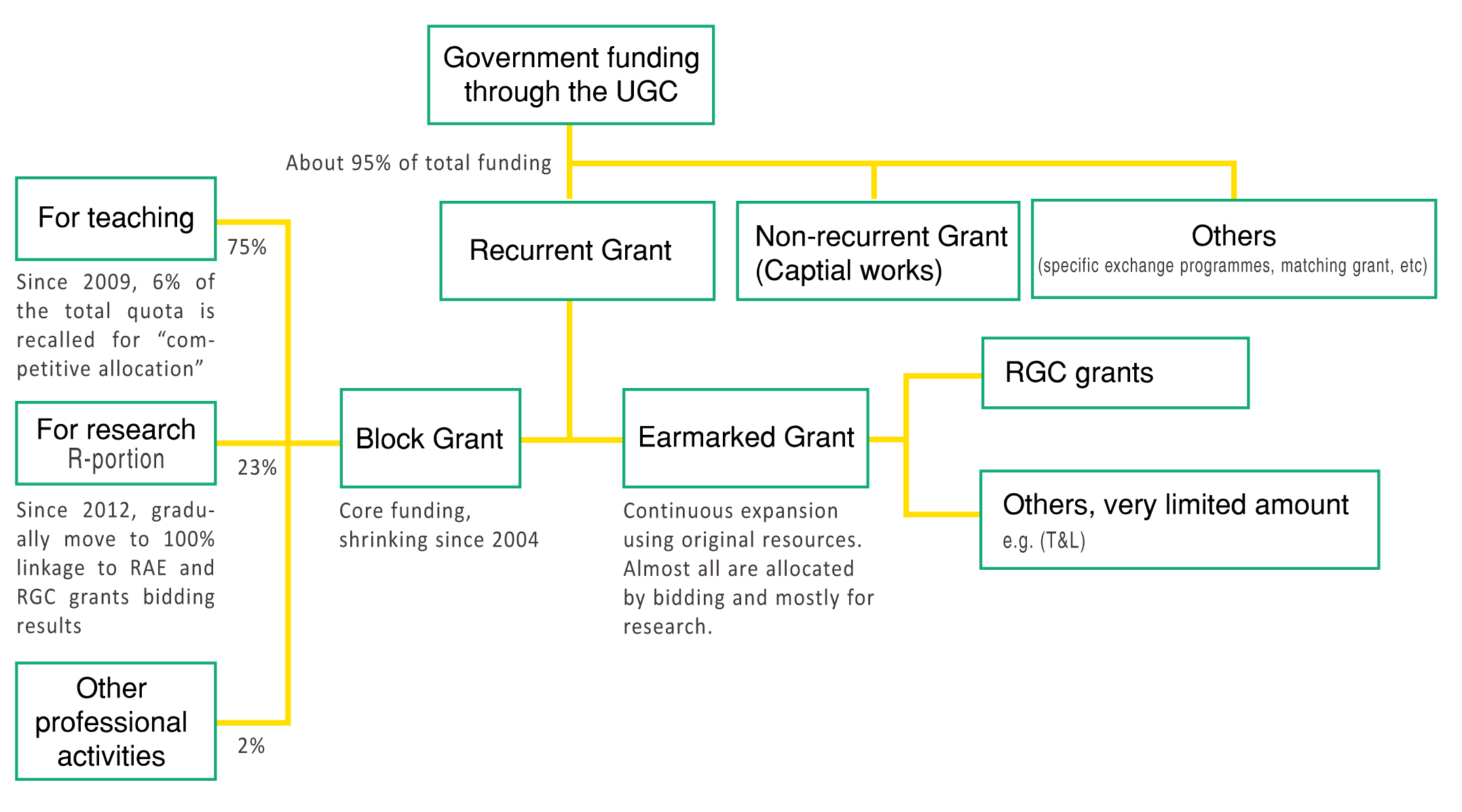CUHK Employees General Union
eNews (June 2018)
Editor-in-chief: Chan Yin Ha Vivian | Data: Wong Ka Po | Design and Typesetting: Cheng Chun Wing, Aidan Chau and Dora Lam (e-version) | Translation: Emily Ng
Special Feature
UGC's Funding Strategies and the Budget Cut that Goes Without Notice
(Chun Yu)
Ever increasing paperwork, ever precarious employment and ever mounting pressures and tensions are commonplace in all our universities. Who are the culprits? Where lies the problem? CUEGU former president Emily Ng, while now residing overseas, still has these issues close to her heart. Her two recent articles in the local newspaper Ming Pao Daily point out that the source of these problems is in the funding policies and thereby manipulations of the UGC.
Working at the university, what we see seems to be an increase in resources. Yet, Emily's finding is that the UGC has continuously cut the institutions' budgets since 2004. Why such contradiction? What happens is that the UGC has been reducing the core funding, the block grant, while the "increased resources" are on the various earmarked grants designated for specific purposes. In other words, these are all project-based. Project periods are short, leading to the surge of casualised, short contracts. It also becomes difficult for universities to undertake any long-term and coherent planning. Making matters worse are the funding strategies of bidding and performance-linked allocation, pushing the local universities to compete among themselves.
The following figures are presented in the articles:
- In 2003/04, funding allocated through the UGC to the eight universities made up 6% of the total government expenditure. Now the figures have fallen to the range of 4.2% to 4.5%. (Those new project-based funding schemes already included.)
- In 2003/04, the total recurrent grant allocated to the eight universities was 11.5 billion. By 2016/17 the figure had increased to 19 billion. After inflation is taken into account, the actual increase was only 28%. But during this time, the number of undergraduate students alone has increased by over 30% with the shift to a four-year curriculum.
- It is most obvious when you look at the unit cost per student. In 2003/04, the average subsidy per student was $211,000. In 2016/17, the figure was $259,000. After inflation, the actual amount is only 87% of that in 2003/04. (One may recall that as we shift to a four-year curriculum, the funding for the added year is only calculated at 65% of the original level.)
What these rigid and meticulous checks never account for is whether the work of the UGC has effectively promoted the quality of Hong Kong's higher education ... Departments and scholars are not able to make long-term plans; talents have no job security; huge amounts of paperwork are consuming the institutions' energy. The pressure of the heavy burden of performance assessment and competition trickles down onto each and every teacher, creating endless tensions between each level ... There is a lack of mutual trust between teachers and the management ... making cooperation a dream. These are probably not conditions for an environment where creativity can flourish, scholars can focus on their pursuit of knowledge, or students can joyfully learn.
Emily points out at the end of her second article:
Shall we also have a comprehensive examination of the damage done to our university education over these years by the exceedingly strict control of the UGC? Or further, have an audit of the UGC's practices and roles, to relax its control over the universities, in order to rebuild a healthy environment for teaching and research?
We who are facing the UGC adverse effects certainly agree to the above suggestions. Would the management of the eight universities also be willing to work with us to halt the obsessions of the UGC?
Emily's articles in Chinese are worth reading in full:
〈算大學教資會的帳〉,《明報》,2018年5月3日,
bit.ly/2KPrDby。(To read the article in full, you need to be a subscriber of Ming Pao
Daily, or simply login Wisenews with your library account.)
〈再算大學教資會的帳〉,《明報》,2018年5月17日,
bit.ly/2Kws3ms。
Annotated UGC funding distribution (provided by Emily Ng)
